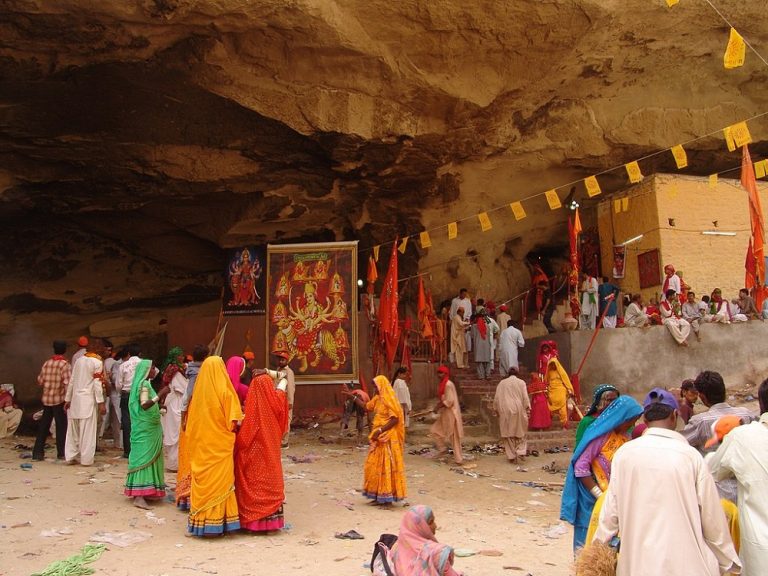
It is the temple of a highly revered Hindu goddess Hinglaj Mata, a deity that bestows goodness to all.
By Haroon Shuaib
Not many know that the largest Hindu pilgrimage site in Pakistan is in Lasbela district of Balochistan. Situated in the 6,200 square kilometers wide Hingol National Park, it is the temple of a highly revered Hindu goddess Hinglaj Mata, a deity that bestows goodness to all. Next to one of the mountains of the Makran Coastal Range, the temple is approximately 120 kilometers from the Indus River Delta and 20 kilometers from the Arabian Sea. Hingol National Park is arid, and the name of Hinglaj Mata also lends itself to the neighboring Hingol River, the longest river in Balochistan. Since it is located in a desert, the shrine is also referred to in holy texts as ‘Marutirtha Hinglaj’ ‘the ‘Shrine of the Desert’, ‘Maruthal’ meaning desert in Sanskrit.
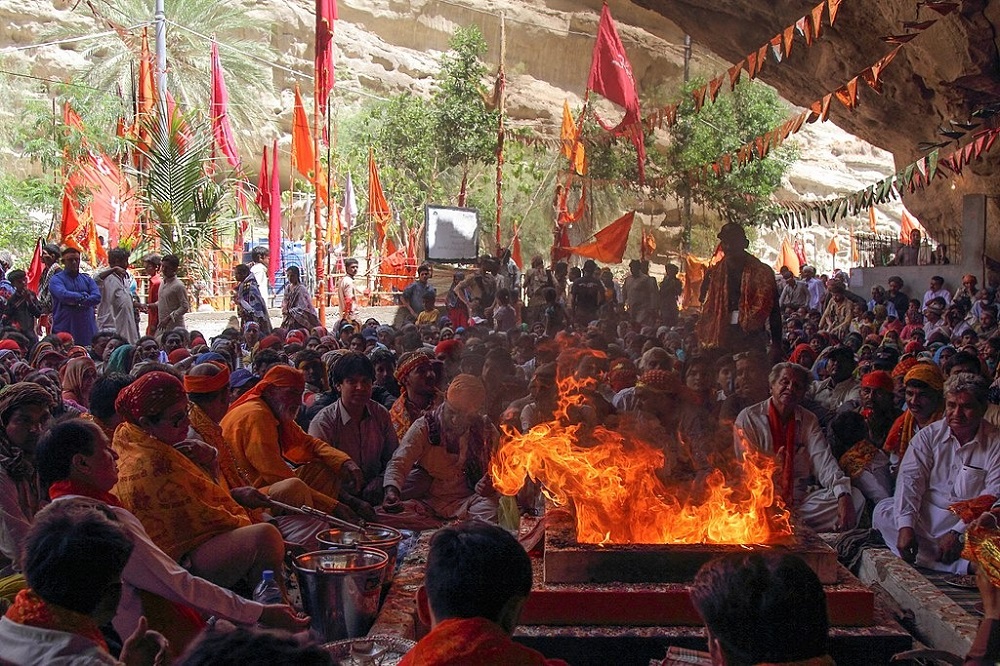
It takes about 4 hours on the Makran Coastal Highway, which runs parallel to the coast of the Arabian Sea, to reach the site. The highway has made the pilgrimage very convenient, which earlier took 20 days by foot. The shrine is a small natural cave with a low mud altar. There is no man-made image of a goddess and instead a small shapeless stone is worshiped as Hinglaj Mata. This sacred stone is smeared with Sindoor (vermilion) and the ease of access since last three decades has made the site a unifying point of worship for Pakistan’s Hindu community, that mainly live in the provinces of Sindh and Balochistan. More than 250,000 people take part in the Hinglaj Yathra (pilgrimage) every spring, in the month of April. Although the road has shortened the distance, the path followed from ancient times through the desert is still considered a desirable penance to purify oneself before approaching the deity. The pilgrims making the trip through the old path are led by priests holding a wooden trident in their hands. Since they hold the trident during the trip, they are called ‘Chhadidars’ (those who hold the stick or chhadi).
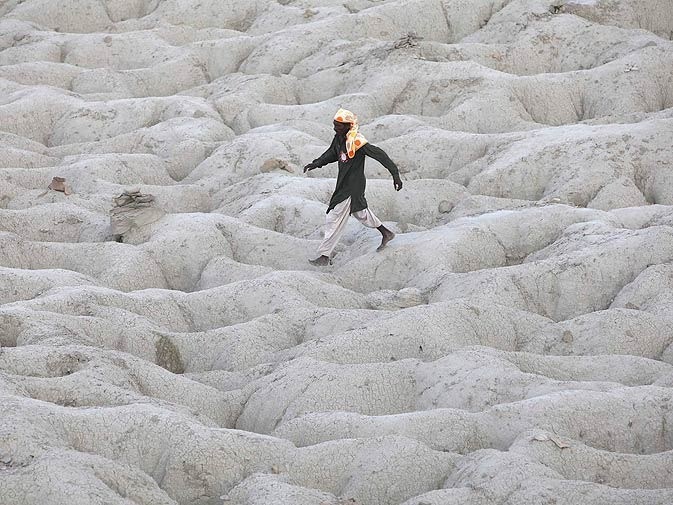
The legend of Hinglaj Mata relates to Sati, daughter of Prajapati (Master Lord) Daksha. Sati married God Shiva against her father’s wishes. One day, Lord Daksha organized a feast but did not invite Sati and Shiva. Against Shiva’s advice, Sati reached her parents’ house uninvited where Lord Daksha ignored her and vilified Shiva. Unable to withstand this insult, Sati immolated herself. Sati died, but her corpse did not burn. A grief-stricken Shiva wandered the universe with Sati’s corpse till finally God Vishnu dismembered the body into 108 parts, from which 52 fell on earth, and the rest, on other planets. According to scriptures, the head of Sati fell at Hinglaj.
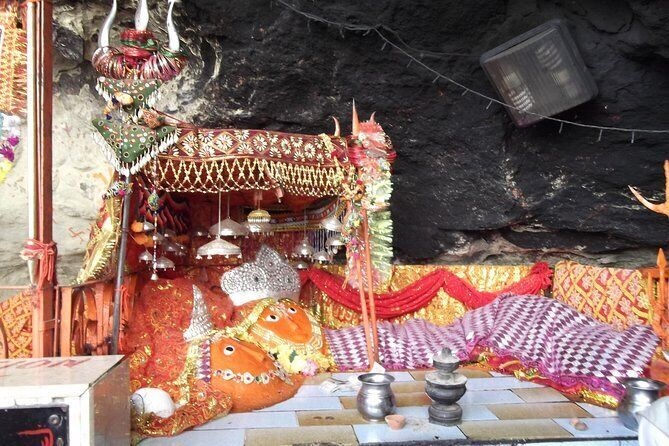
The first and perhaps equally important stop during the pilgrimage is the mud volcano called ‘Chandragup’ (Moon Well), mainland Asia’s largest mud volcano. It is considered holy by its association with Lord Shiva and is addressed as ‘Baba Chandragup’ (Father Moon Well). The volcano is considered to be the abode of a demigod ‘Babhaknath’. Pilgrims stay up all night at the base of the volcano making Rotis – traditional flat bread of flour, ghee (clarified butter), and jaggery. Early in the morning, the bread is carried by pilgrims and priests to the mouth of the crater. A Chhadi is planted near the edge of the crater, incense is lit, rose petals are spread, mantras are recited and one by one the Rotis are tossed into the crater along with coconuts as a penance for any sins. Next stop is made at a village, home of Baluch tribesmen who are also caretakers of the shrine. The pilgrims bathe in Hingol River as it is prescribed to enter the shrine in wet clothes.
Interestingly, many Muslim communities, especially Zikris and some Sufi schools also revere Hinglaj Mata. Greatest of all Sindhi saints, Shah Abdul Latif Bhittai, also visited Hinglaj Mata temple and mentioned it in his poetry.
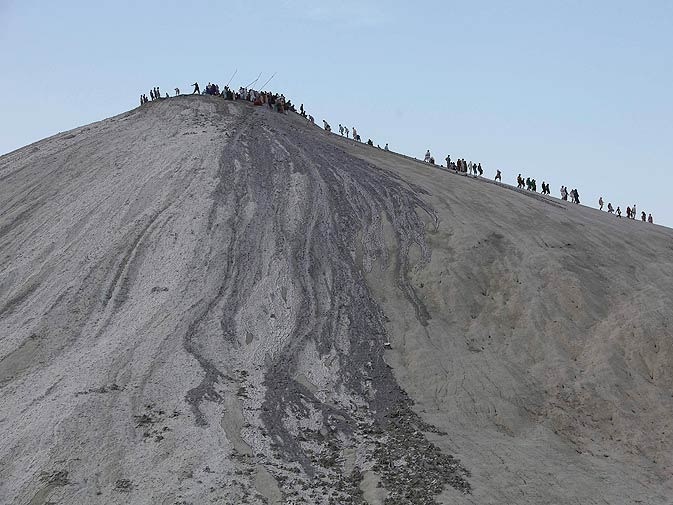
Hingula means cinnabar (Mercuric Sulphide), and is used from ancient times to cure snakebite and other poisonings. Goddess Hingula is thus believed to possess powers that can cure poisoning and other diseases. The shrine is marked by a sign that resembles the sun and the moon. One can see this mark from afar, upon a giant boulder at the top of the hill. It is believed that the Hindu God Lord Ram created this mark with his arrow. The natural beauty of the shrine has spawned folklore that it was constructed by ‘Yakshas’ (demigods). The walls and the roof of the cave are encrusted with colourful stones and semi-precious veins. Entrance to the cave is around 50 feet high. At the end of the cave is the sanctum sanctorum, which houses the holy relic. One has to crawl into the sanctum for ‘darshan’ (sighting) and leave through the other opening. To pay reverence to the deity of the temple, red or saffron clothes, incense, candles and ‘shirini’ (sweetmeat) is offered. Hinglaj Mata is considered ‘Kuldevi’ (Omni Goddess) by Anavil Brahmin, Kshatriya, Charan and other Hindu communities of the region. The pilgrimage ends with the sighting of the Milky Way at night.
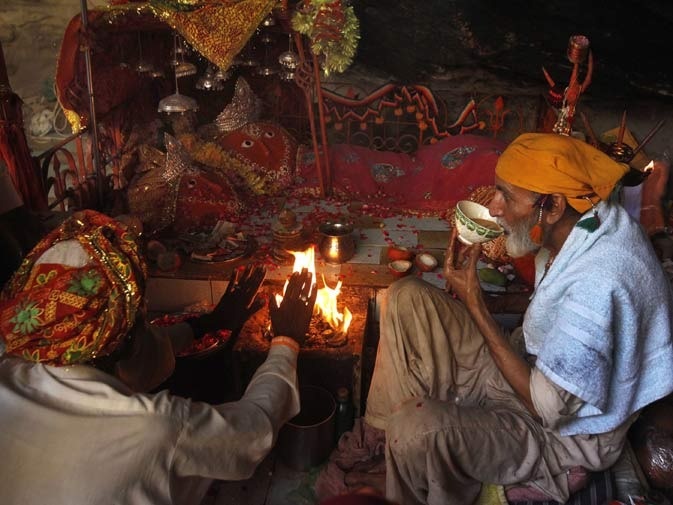
Interestingly, many Muslim communities, especially Zikris and some Sufi schools also revere Hinglaj Mata. Greatest of all Sindhi saints, Shah Abdul Latif Bhittai, also visited Hinglaj Mata temple and mentioned it in his poetry. The sur (tune) ‘Ramkali’ was composed by Shah Abdul Latif Bhittai in reverence to the Hinglaj Mata and the jogis (hermits) on the pilgrimage. There is a legend that once Shah Bhittai reached the temple, he offered milk to the deity as an offering. Hinglaj Mata was so pleased with this act of offering for he was from another faith, that she appeared in front of him to bless him.
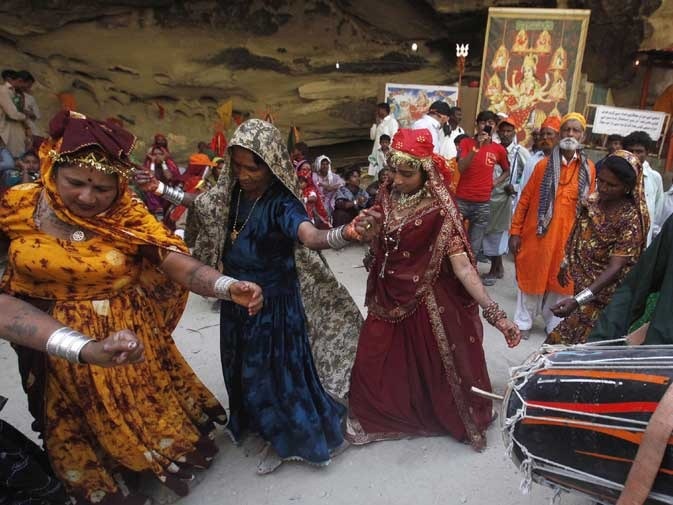
Currently, pilgrims from all over Pakistan and even India visit the temple, holding traditional red banners and wearing red-gold decorative head-scarves. Hindu women traditionally dress in heavily embroidered clothes with bangles adorning their wrists. Hundreds of volunteers help in the organization of the four-day pilgrimage. Community kitchens are set up and special food prepared to feed the devotees. The whole valley of Hinglaj is considered sacred like Hinglaj Mata herself.
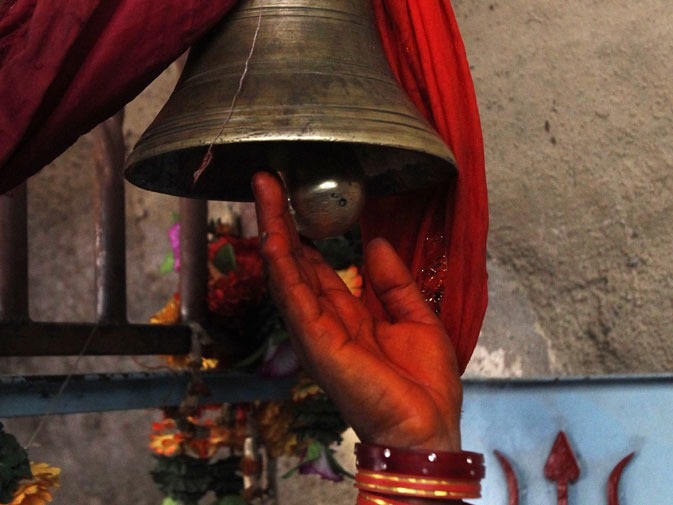
This is an ancient temple in a natural desert landscape. Greek travellers dating back to the 4th century have written about this shrine. According to the Hindu holy book Ramayana, Lord Rama, his wife Sita and brother Lakshman also visited the holy site of Hinglaj during their exile. Sikh saints, such as Guru Gorakh Nath and Guru Nanak Sahib, also undertook a pilgrimage to Hinglaj Mata Mandir. Muslims, especially the Zikris of Balochistan, also pray here and call it the shrine of Nani Pir (Grandmother Saint).
As bare feet devotees, with mud from Hingol smeared on their bodies, sway to religious music and mantras, boundaries of time, faith, class and creed melt away against the backdrop of Hinglaj Mata Mandir. The transcending quality of nature and man praying in unison appears to erase all divides. Just as migratory birds from Siberia converge at the Hingol National Park every spring, devotees of Hinglaj Mata also continue to follow their own ancient patterns.
______________
Courtesy: Youlin Magazine (Posted on: May 31, 2022)